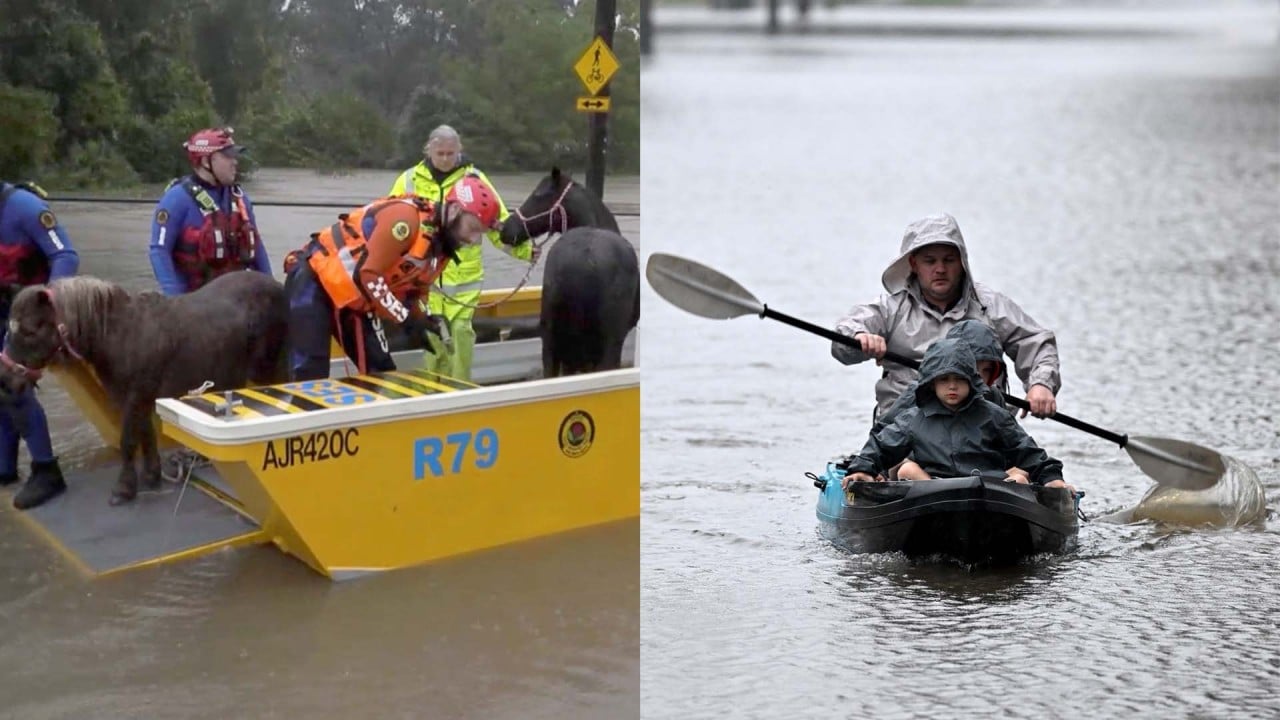
Australia’s climate change challenge: safeguard jobs while moving away from fossil fuels
- Climate change threatens Australia’s fragile ecosystem as well as lives and livelihoods, yet the country remains heavily dependent on its massive coal industry
- The challenge facing the new Labor government is how to pursue progressive environmental policies without driving economic hardship
Australia is one of the most susceptible places on Earth to the effects of climate change. Record-high monthly and seasonal temperatures across the continent have led to severe droughts, forest fires, floods and other extreme weather events. Rising sea levels threaten livelihoods, infrastructure and housing. In the future, we can expect more of the same.
Australia’s surface temperature has increased by 1.4 degrees Celsius and open ocean regions have warmed by 1 degree, resulting in unbearable heatwaves. These heatwaves, stronger and more frequent than in the past, have claimed more lives lately than all other natural catastrophes in the country combined.
More than 80 per cent of Australia’s mammals are unique to the continent, which is known for its diverse flora and fauna. In just the past five years, 175 plant and animal species have been listed as environmentally threatened. If prompt action is not taken to stop the continent’s drastically declining environmental health, this richness could be lost forever.

It’s no wonder, then, that climate change has become one of the most difficult and divisive topics in Australian politics. The country is sensitive both to the effects of climate change and to policies which attempt to mitigate them.
In 2019, following prolonged droughts, destructive floods and bushfires, Australian voters were expected to give the country’s Labor party a mandate to pursue its ambitious goals for renewable energy and carbon emissions reduction. Instead, Labor’s bold environmental plans were successfully demonised by the opposing Liberal-National Coalition.

The government’s first piece of climate change legislation was approved by the Australian House of Representatives on August 4. It sets two national targets for cutting greenhouse gas emissions: a 43 per cent cut from 2005 levels by 2030, and a reduction to “net zero” by 2050.
The bill stresses that the 2030 objective is just the beginning, and more steps will be taken. It also mandates that several government bodies take the targets into account when making investment decisions. After years of inaction, the world’s third-largest exporter of fossil fuels has finally decided to confront global warming.
The bill also gives power back to the Climate Change Authority (CCA), an organisation responsible for providing independent policy advice, after it was sidelined by the previous coalition government. The authority will now provide advice on the status of Australia’s climate targets and set new targets for 2035 further down the line. If the government fails to follow the advice, it will be required to publicly explain why.
The ousted coalition party has, unsurprisingly, rejected the new climate bill and declared that it will instead come up with its own proposals, which could include advocating the use of nuclear power.
Of course, Labor’s climate policies are not without their flaws, and some specifics still need to be fleshed out. For one, the aim to cut emissions by 43 per cent by 2030 remains below the 50-75 per cent range which experts recommend. Albanese has also made clear that his government will not support a total ban on fossil fuel projects.
Indeed, fossil fuels will continue to drive the country’s economy, at least until a shift to renewables takes place. The new government will take over 114 new coal and gas projects from the previous leadership, which are likely to cause a sharp rise in Australia’s emissions. But devising strategies which allow communities that currently depend economically on fossil fuels to also profit from renewable energy initiatives won’t be easy.
Hong Kong’s carbon emissions technology needs an update
Australia’s changing climate poses a substantial challenge to the government, businesses, industries, communities and individuals. Despite Labor riding to power on the growing environmental concerns of voters, Australia’s climate change battle must still be fought on two fronts – political and economic. Unless good policies can be combined with good economics, the country will struggle to address the environmental perils it faces.
Moreover, in a country where elected governments only serve a three-year term, making concrete progress is a tall order when dealing with something as complex, far-reaching and long-term as climate change.
Professor Syed Munir Khasru is chairman of the international think tank, IPAG Asia Pacific, Australia, with a presence in Dhaka, Delhi, Vienna and Dubai


